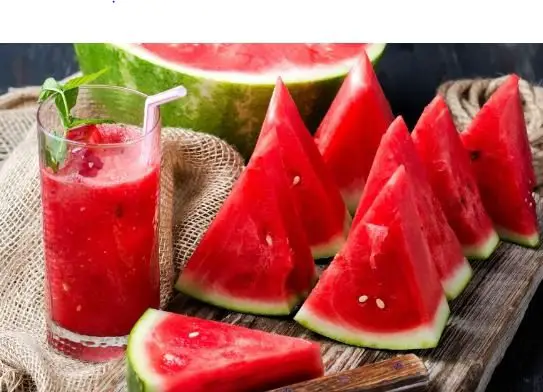The Juicy Tale of Watermelons – A Journey from Wild Vines to Your Dining Table
Do you ever wonder about the origins of your favorite summer fruit, the watermelon? That juicy, sweet delight that quenches your thirst and cools you down on a hot day? Well, fasten your seatbelts because we’re about to embark on a fascinating journey tracing the lineage of this beloved fruit.
Our story begins in the wilds of Africa. ! The watermelon’s ancestral home is the Kalahari Desert in southern Africa. Here, wild watermelons thrived and were harvested by indigenous tribes. But don’t let your imagination run wild; these weren’t the plump, sweet fruits we know today. Instead, they were small, bitter fruits with hard rinds.
So how did these bitter fruits evolve into our modern-day sweet treat? The answer involves a process called selective breeding. Over generations, humans chose to plant seeds from the larger and sweeter fruits. Over time, this selection pressure led to watermelons as we know them today.
Let’s take a quick detour to Egypt around 5,000 years ago. Archaeologists have found watermelon seeds and paintings of watermelons in ancient tombs including King Tutankhamun’s! This shows us that not only had watermelons reached Egypt by this time but they were also considered significant enough to be part of royal burials.
Fast forward a few centuries to when watermelons began their global tour courtesy of merchant ships and slave trade routes. They made their way across the Mediterranean Sea into China (which is now one of the largest producers of watermelons), Europe and eventually America.
In America, where conditions were perfect for growing large fruit varieties, farmers took advantage of this opportunity and began cultivating seedless varieties in the 20th century. Today, these seedless watermelons make up 85% of sales in the US.
And there you have it – a brief but juicy history of the watermelon. From bitter fruit in the African desert to a sweet staple at your summer barbecues, watermelons have come a long way.
But before we wrap up, here’s an extra slice of information for you. Did you know that every part of a watermelon is edible? Yes, even the rind! In fact, in some cultures, the rind is pickled or stir-fried and consumed as a delicacy. So next time you enjoy a watermelon, remember its incredible journey and maybe try something new with the rind!
So here’s to celebrating this versatile fruit that has traveled continents and centuries to reach our plates. The next time you bite into that juicy slice of watermelon, remember its rich history and global journey.
Stay curious and keep exploring!
P.S. If you have any fascinating food histories or recipes to share, drop them in the comments below. Let’s continue this journey of culinary discovery together!


